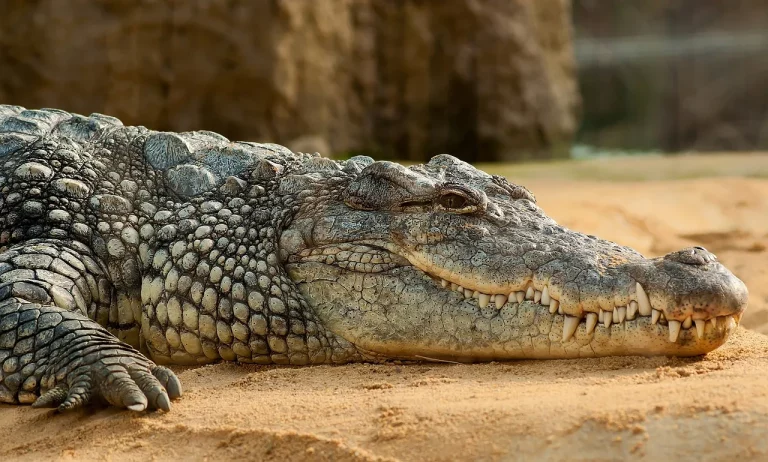Is Baja California Part Of The United States?
With its beaches, deserts, and coastal cities just south of California, Baja California feels closely tied to the U.S. But it is actually part of Mexico. In this comprehensive guide, we’ll explore Baja California’s geography, history, culture, and relationship with the U.S. to understand its status on the North American map.
If you’re short on time, here’s a quick answer: Baja California is a state in northwestern Mexico, not part of the United States. However, its proximity to California leads to close economic, cultural, and tourism ties between Baja California and the U.S.
Geography of Baja California
Baja California, also known as the Baja Peninsula, is a long and narrow strip of land that stretches south from the United States-Mexico border. It is located on the western coast of Mexico and is separated from the rest of the country by the Gulf of California.
The peninsula measures approximately 1,247 kilometers (775 miles) in length and is one of the longest peninsulas in the world.
Baja Peninsula
The Baja Peninsula is characterized by its diverse geography. It is home to a rugged mountain range known as the Sierra de Baja California, which runs along the length of the peninsula. This mountain range includes peaks that reach heights of over 3,000 meters (9,800 feet).
The landscape also features vast desert areas, such as the Vizcaíno Desert and the San Felipe Desert, which are known for their unique ecosystems and stunning natural beauty.
Pacific and Gulf coasts
Baja California is bordered by two bodies of water: the Pacific Ocean to the west and the Gulf of California to the east. The Pacific coast is known for its picturesque beaches and popular tourist destinations, such as Rosarito and Ensenada.
On the Gulf coast, visitors can explore charming fishing villages and engage in activities like snorkeling and kayaking. The waters surrounding the peninsula are also home to a rich marine life, making it a popular destination for divers and nature enthusiasts.
Distinct from California
While the name Baja California may sound similar to the US state of California, it is important to note that they are two separate entities. Baja California is part of Mexico and is not a part of the United States.
The distinction between the two regions is not only political but also cultural and geographical. Baja California has its own unique history, traditions, and natural wonders that set it apart from its northern neighbor.
To learn more about the geography of Baja California, you can visit the official website of the Baja California Tourism Board at https://www.discoverbajacalifornia.com/.
History of Baja California
Baja California, a long peninsula located in Northwestern Mexico, has a rich and diverse history. From its earliest inhabitants to its current status as a Mexican state, Baja California has played a significant role in the region’s history.
Indigenous peoples
Before the arrival of European settlers, Baja California was home to various indigenous peoples, including the Kumeyaay, Cochimí, and Kiliwa tribes. These tribes lived off the land, relying on fishing, hunting, and gathering for sustenance.
They had a deep connection with nature and a rich cultural heritage that is still celebrated today.
Spanish colonization
In the 16th century, Spanish explorers, led by Hernán Cortés, began to venture into Baja California. They were searching for new trade routes and resources. The Spanish colonization of Baja California was marked by conflicts with the indigenous peoples and the establishment of missions along the peninsula.
The Jesuit, Franciscan, and Dominican orders were instrumental in establishing these missions, which aimed to convert the indigenous population to Christianity and introduce them to Spanish customs and way of life.
These missions played a crucial role in shaping the culture and economy of the region.
Mexican state
After gaining independence from Spain in 1821, Mexico inherited Baja California as part of its territory. However, the region faced various challenges, including conflicts with foreign powers and internal political turmoil.
It wasn’t until 1952 that Baja California became a Mexican state, separate from Baja California Sur, its southern counterpart.
Today, Baja California is known for its natural beauty, vibrant culture, and thriving tourism industry. Its unique blend of Mexican and Californian influences makes it an intriguing destination for visitors from around the world.
For more information on the history of Baja California, you can visit the official website of the Government of Baja California.
Cultural Influences and Demographics
Baja California, despite being part of Mexico, has been greatly influenced by its proximity to the United States. This influence is evident in various aspects of the region’s culture and demographics.
Tourism
Baja California is a popular tourist destination, attracting visitors from both Mexico and the United States. Its stunning beaches, vibrant nightlife, and delicious cuisine make it a magnet for travelers seeking a unique experience.
The tourism industry in Baja California has benefited greatly from its close association with the United States, with many American tourists visiting the region every year. The influence of American tourists can be seen in the availability of English-speaking staff, American-style restaurants, and familiar amenities.
American expatriates
Many American expatriates have chosen to make Baja California their home. The region’s pleasant climate, affordable cost of living, and relaxed lifestyle have drawn a significant number of Americans seeking a change of scenery.
The presence of American expatriates has had a profound impact on the local culture, contributing to a fusion of Mexican and American traditions. This can be seen in the emergence of expat communities, where residents celebrate American holidays alongside Mexican festivities.
Distinctly Mexican identity
While Baja California has been influenced by American culture, it has managed to retain its distinctly Mexican identity. The region is proud of its rich heritage, which is reflected in its traditional celebrations, music, and cuisine.
Baja California’s proximity to the United States has allowed for cultural exchange, but it has also reinforced the importance of preserving and celebrating Mexican traditions. The region’s diverse population, which includes both Mexican locals and American expatriates, creates a unique blend of cultures that adds to the vibrant fabric of Baja California.
Economic and Political Ties with U.S.
Baja California, a Mexican state located on the Baja California Peninsula, shares a close economic and political relationship with the United States. This proximity has resulted in a myriad of ties between the two regions, including trade, industry, and immigration policies.
Trade
Trade between Baja California and the United States has been a significant contributor to the region’s economic growth. The state’s strategic location along the U.S.-Mexico border has facilitated the movement of goods and services between the two countries.
According to the U.S. Census Bureau, in 2020, the total trade between California and Mexico amounted to $61.2 billion, with Baja California playing a significant role in this exchange.
Baja California is home to numerous manufacturing plants, also known as maquiladoras, that operate under the maquiladora program. This program allows companies to import raw materials duty-free, manufacture products in Mexico, and then export them back to the United States.
The maquiladora industry has been instrumental in promoting cross-border trade and fostering economic growth in the region.
Industry
Baja California has a diverse industrial sector that spans various industries, including aerospace, medical devices, electronics, and automotive. The state has attracted foreign direct investment from multinational corporations due to its proximity to the United States, competitive labor costs, and skilled workforce.
Many of these industries have established partnerships and supply chains that extend across the border, further strengthening the economic ties between the two regions.
The aerospace industry, in particular, has experienced significant growth in Baja California. The state is home to several aerospace companies, including manufacturing facilities for major aircraft manufacturers.
This industry’s success has not only boosted the local economy but has also contributed to the overall competitiveness of the North American aerospace sector.
Immigration Policies
The immigration policies of the United States have a direct impact on the population dynamics of Baja California. Due to its proximity to the U.S.-Mexico border, the state has experienced a significant influx of migrants, both legal and undocumented, seeking economic opportunities in the United States.
U.S. immigration policies, such as changes in visa regulations and border control measures, can have ripple effects on the population and economy of Baja California. For instance, changes in temporary work visa programs can affect the availability of labor for industries in the state, while stricter border control measures can impact cross-border trade and tourism.
It is important to note that Baja California remains an integral part of Mexico and operates under Mexican laws and governance. However, the economic and political ties with the United States have undoubtedly shaped the region’s development and continue to play a vital role in its prosperity.
Conclusion
While Baja California has close geographic, cultural, and economic ties with California and the U.S., it remains a state within Mexico’s borders. Still, the connections between Baja California and the U.S. run deep, even if political allegiance does not.








